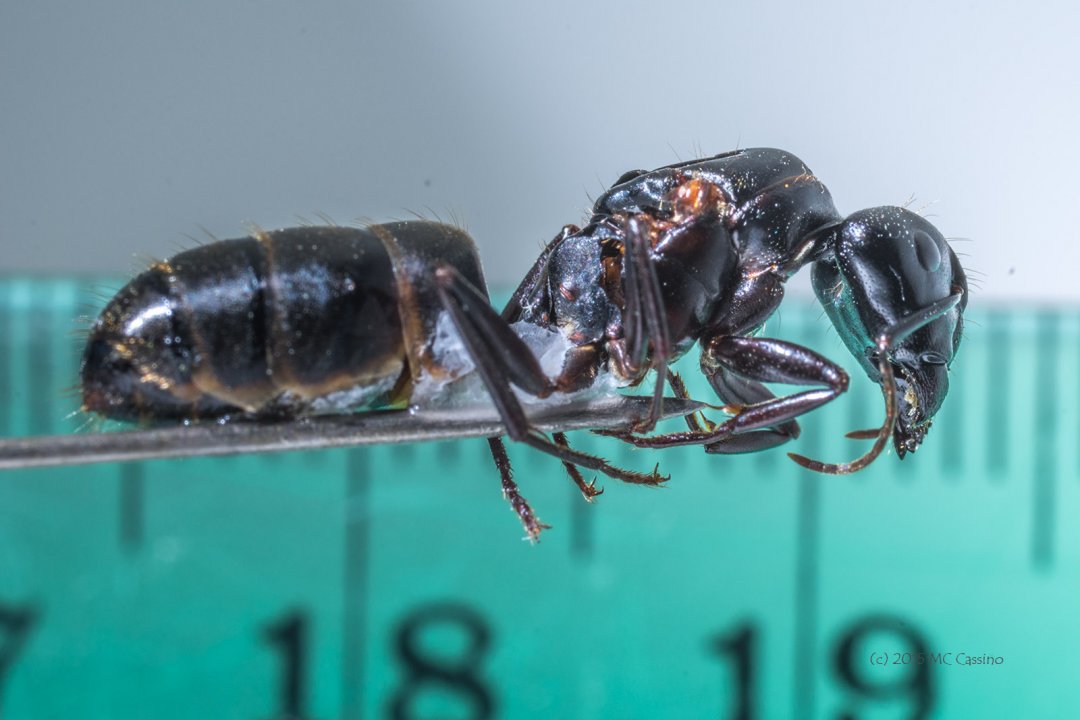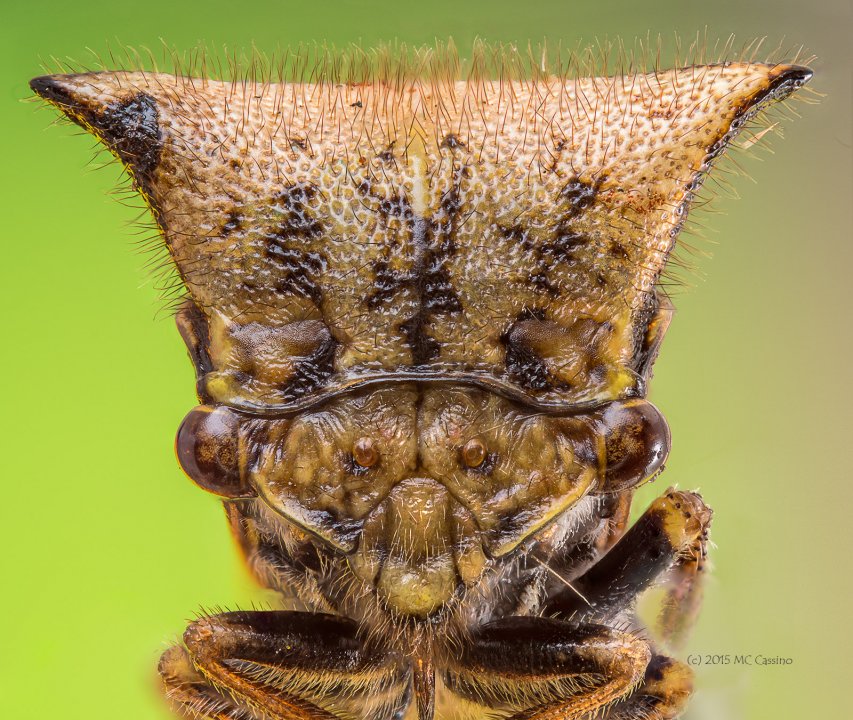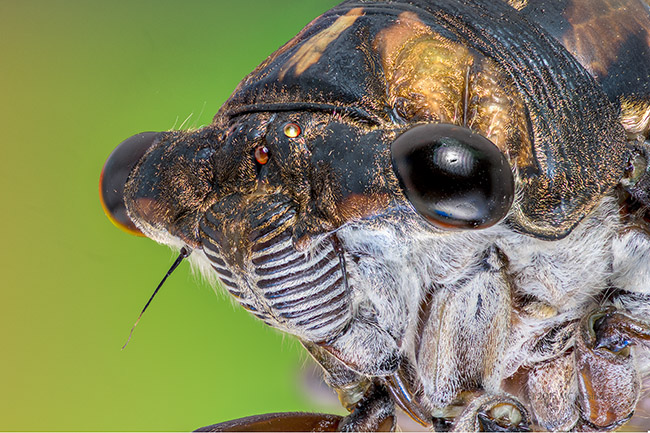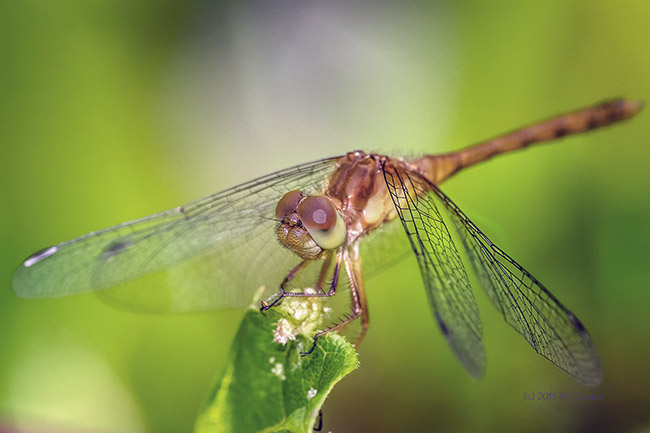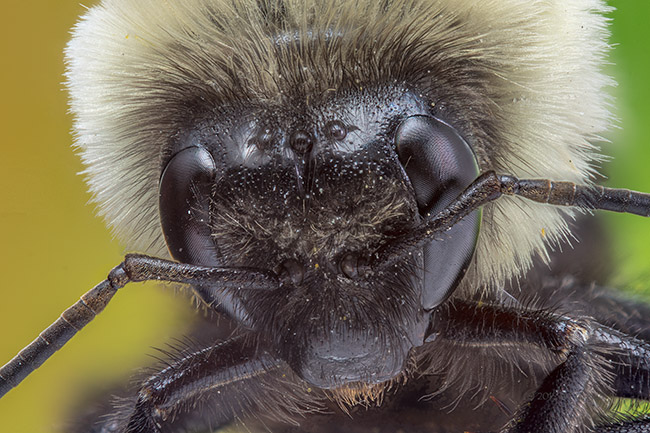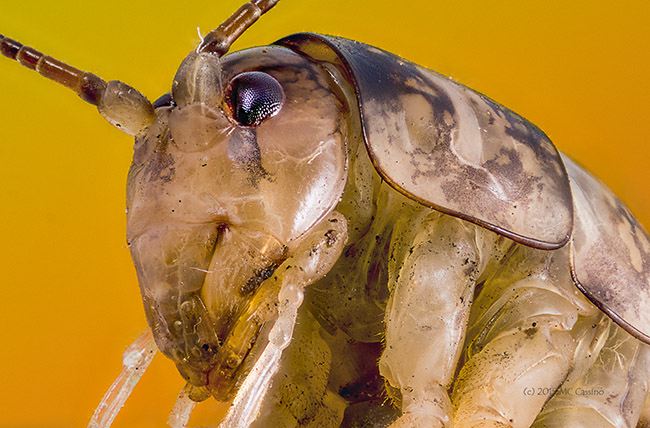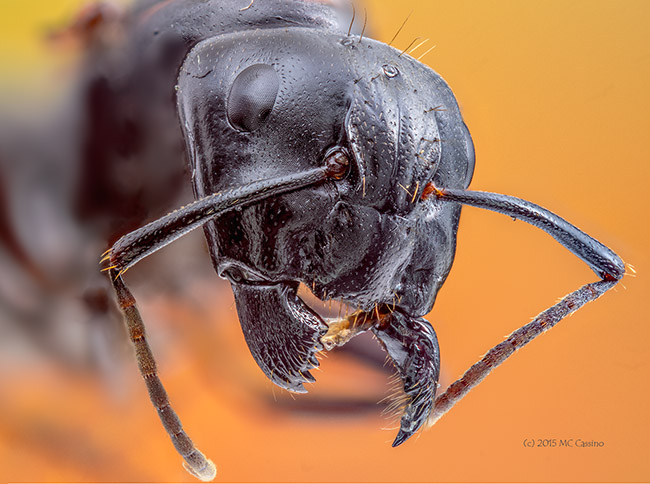Posted by mark on Aug 11 2015 in Insect Photography, Extreme Macro
Posted by mark on Aug 02 2015 in Insect Photography, Macro Photography, Focus Stacking, Extreme Macro

An up close image of a Japanese Beetle - Popillia japonica:
These iridescent beetles love to much on almost anything that grows in your garden, and with the absence of any natural predators in North America, they are indeed a destructive pest.
This photo is a stack focused composite of 54 exposures taken in a single pass at roughly 5x lifesized magnification.
Posted by mark on Jul 30 2015 in Insect Photography, Allegan State Game Area, Allegan Forest, Dragonfly Photography, Odonata Photography
Another photo of a a red meadow hawk dragonfly, genus Sympetrum. This is a field stack focused image - 16 images taken with a monopod supported macro setup combined t0 maximize depth of field:
The subject seems to be transitioning from the dull orange juvenile coloration to the bright red of an adult male. Not certain regarding the flower - maybe valerian?
Taken in the Allegan Forest, July 21, 2015.
Posted by mark on Jul 28 2015 in Insect Photography, Macro Photography, Extreme Macro
It is summertime and the cicadas are singing... These are insects often heard but less often seen, since they emerge from the ground and fly up into the nearest tree or other roost as soon as possible. This unfortunate individual did not successfully complete metamorphosis - one wind remained ill formed and the whole exuvia of its former shape was stuck to it. I found it thrashing helpless on the ground, so I snatched it up before the birds (or more likely my cat) got to it:
I would tentatively identify it as a male Tibicen linnei - the fact that there are only 10 species of cicada in Michigan helps make the id a little more easy.
This image is only 1.4x lifesized. It was made with a Pentax K3, DFA 100mm macro lens and extension tube. This is 232 images compiled in 2 separate stacks and then blended together.
Posted by mark on Jul 25 2015 in Insect Photography, Dragonfly Photography, Odonata Photography
Unlike so many of my recent photos here's one made outdoors with a single exposure:
The first of the summer Meadowhawks are finally starting to appear - this summer's cool and rainy weather seems to have delayed their arrival. Very few of the dragonflies that I've seen so far have taken on the coloration of mature males - often bright red. This individual is probably of the genus Sympetrum, colloquially known as Meadowhawks. This would either be a female or immature individual. While a few Meadowhawk species have markings distinctive enough to allow identification from photos, most do not. Identification really depends on capturing the individual and examining it to determine the species (which assumes you know what to look for when examining it!) I've made tentative identifications of these in the past, but for this and most future subjects like it, I'm content to simply call it a Meadowhawk and leave it at that.
Posted by mark on Jul 23 2015 in Insect Photography, Focus Stacking, Extreme Macro
I found this small bumble bee drowned in my cat's outdoor water dish. Don't know the species, but it was a fairly small bumble bee - about the length of a typical European Honey Bee but much stouter. A close up of its head (click on the image for a larger file):
Pentax K3 with reverse mounted SMC K 24mm f3.5, no additional extension (about 2.5x life sized.) Two separate stacks combined, 111 exposures total.
Posted by mark on Jul 18 2015 in Insect Photography, Macro Photography, Extreme Macro
Common names for these are Cave Crickets, Camel Backed Crickets, Spider Cricket, etc... they live in darkness, eat mold and fungus, and are just kind of ichy.
Cave Cricket (family Rhaphidophoridae)
One of my cats goes crazy whenever she sees one of these. She invariably winds up killing and eating them and then .... let's just say they don't agree with her digestion. Oh well...
I shot this a few weeks ago but screwed up and the pin it was mounted on was visible so I cropped in about 20%to eliminate it - made the top of the frame a little tight (I would like to show more of the antennae). 45 stacked images in a single run. DFA 50mm f2.8 macro reverse mounted with minor extension - approx 2x lifesized.
Posted by mark on Jul 09 2015 in Insect Photography, Macro Photography, Extreme Macro
I've been keeping watch for interesting insects to photograph, including watching for carpenter ants. So I was pleasantly surprised to stumble onto this very large carpenter ant (Camponotus spp.) yesterday morning:
This ant is roughly 15mm in length. It was dead, laying on the pavement. Base on its size alone, it appears to be a female Carpenter Ant. Looking at it closely shows spots on the thorax where the wings had recently fallen off, so it was probably a recently emerged female looking for a place to nest.
I'm not sure what killed it, but it was near a part of the house that had been treated for a carpenter ant infestation a few years ago. It may have encountered some residual pesticide.
This photo was made at about 2.5x life-sized, which is the magnification that the SMC K 24mm f3.5 yields when reverse mounted onto a DSLR with no additional extension. This image is 50 separate exposures stacked together with Zerene Stacker.
Here's a reference photo of the insect:
